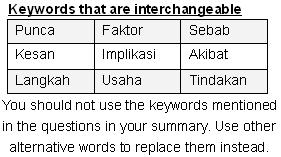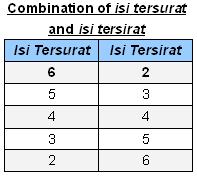Math Study Skills
- Read what the instructor will be lecturing on before you go to class.Read slowly. Reading mathematics is not like reading a novel or even history. Speed reading techniques are not appropriate. Every word and symbol is important to the meaning. Do not skip the symbolic part of the text. This is often the most important part. If you do not understand a symbol, look in the glossary or in the earlier part of the text. Symbols are often explained when they are first introduced. If you still can not find out what a symbol means, ASK!Read with a pencil in hand. Every time the author does a problem, do it on your own—either before or after you read his or her explanation. This makes sure you know what steps have been shown and, more importantly, which ones were omitted. If there is something you do not understand, try to formulate a question about it. Often if you can ask a specific question, you can answer it yourself. If you can’t answer it, you know what part of the instructor’s lecture requires your complete attention. Your question is ready if the lecture does not clear up your misunderstanding.
- Understand the concepts.Don’t be satisfied with vague ideas about how to work problems. Do the examples yourself, understand the concept illustrated, then try making up your own examples. Keep in mind that the questions on the exam may be very different from the example in the book.
- Practice.Be sure you understand the concepts before you practice. Then practice will help you remember and give you confidence in your mastery. Force yourself to remember the methods as you work problems; don’t look back in the book.
- Keep up with assignments (whether they are graded or not).The pace is much faster in college and keeping up to date with assignments helps you to better understand what is going on in class.Mathematics is not a spectator sport. The only way you can learn mathematics is by doing it. Following are some suggestions for getting the most out of the time you spend on homework.
Understand the purpose of homework. Homework in mathematics classes is assigned to help you understand certain concepts and to help you build certain skills. Homework is not assigned to you because it is important to get the right answers. Your instructor already knows the answers.
Try to understand the process, not the specific problem. Classify problems in the assignment by problem type. Although this is often done for you by the directions, it is not always. Do each assigned problem and then check it in the back of the book. Try to figure out why you missed the ones you did instead of just working toward the answer. A similar problem may be on a test or quiz.
Mark homework problems you still do not understand and get help with them before the next class. The next lecture may build on a concept or skill you did not understand in the homework. When you do get help, make notes on what you learned, so that you can study them for the test.
Before closing the book, look back over the assignment and try to explain to yourself what the assignment was about, what each kind of problem was asking, how you got the answers and what the answers tell you. This process will help you understand the material and will help you discover what you don’t understand.
Keep your homework in a convenient and neat notebook so that you will be able to find questions or difficulties you have quickly and easily. This will also provide an invaluable study guide for tests. - Ask questions.Do not hesitate to ask questions. Ask your instructor for help after you have tried to pull class notes and textbook explanations together for review and still don’t understand. Write down specific problems so you have them ready; don’t be vague and say you just don’t understand.
- Don’t hesitate.Get help right away. Tutoring and help sessions are available. The longer you wait before getting help, the harder it will be to get caught up. Most of the time when you feel lost, it is just one concept that you are missing, so get help quickly. One missed concept in a math class will make the rest of your math career a hardship. Don’t feel embarrassed to ask questions and get help; even the best mathematicians have felt completely lost at some point.










 The questions are so direct and mostly the answers will less likely to appear in decimal. You need a little bit of logic compare to Add maths. Besides that, even if you do well in monthly test, you might end up tilting head during SPM examination hall. It’s because monthly tests don’t follow the real format of SPM. Like Intervention 1 for KL state this year, there's no chance in hell this question is coming out in real SPM.
The questions are so direct and mostly the answers will less likely to appear in decimal. You need a little bit of logic compare to Add maths. Besides that, even if you do well in monthly test, you might end up tilting head during SPM examination hall. It’s because monthly tests don’t follow the real format of SPM. Like Intervention 1 for KL state this year, there's no chance in hell this question is coming out in real SPM.